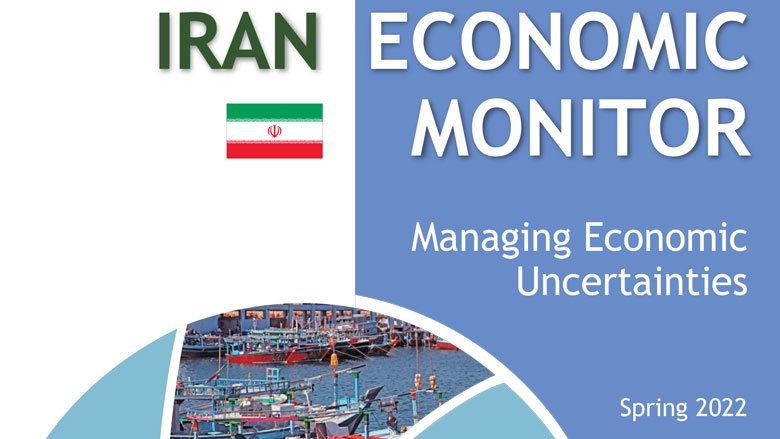With a Special Focus : Preparing for an Uncertain Water Future
Iran’s economy continued its gradual recovery in 2021/221 following the rebound in domestic and external demand. Despite a more accommodative fiscal policy in 2021/22, higher oil and tax revenues have improved the fiscal deficit-to-GDP ratio. Consumer price inflation accelerated due to a combination of supply-push and demand pull factors, adding to pressures on the welfare of lower-income households.
GDP growth is projected to remain modest in the medium term, as the economy remains constrained by both global and domestic growth bottlenecks. A more favorable global oil market outlook is projected to improve Iran’s fiscal and external balances. Higher projected oil prices in the outlook period and growth in oil export volumes considering the tighter global oil market are forecast to improve oil revenues. However, high growth in expenditures due to a growing wage bill and pension spending as well as higher food import costs and additional cash transfers are projected to keep the fiscal balance in a deficit of 4.4 percent of GDP per year in 2022– 24.
Iran’s economic outlook is subject to significant risks. On the upside, further increases as well as sustained high oil prices can result in higher oil export revenues. Downside risks relate to the impact of surging global food prices, the resurgence of new COVID-19 variants, and a worsening of the climate change impact. Soaring global food prices due to the war in Ukraine, if prolonged, could heavily impact crop and fertilizer supplies and raise food security risks. Further price increases would add to Iran’s import bill and put more pressure on the government and its limited accessible foreign exchange reserves. Persistent high inflation, if unmitigated, would increase pressures on lower-income deciles and adds to existing social grievances.
Addressing long-term development challenges, including impending climate change shocks, requires a comprehensive package of economic reforms complemented by adequate social protection measures. Economic policies could be better geared towards creating much-needed jobs. This could be achieved through investment in infrastructure, especially in under-developed regions, stimulating private sector activity via an improved business environment and reducing distortive pricing interventions. To address the potential income and distributional impact of reforms, the most vulnerable households need to be protected by well-targeted social safety transfers.
The Iran Economic Monitor features a Special Section title “Preparing for an uncertain Water Future” that examines the economic impacts of climate change through reduced water availability and temperature impacts on crop yields. The section also presents lessons from countries that have coped with this issue. These pathways include (i) effective water resources management, (ii) improved water use efficiency with water demand management policies, (iii) adept institutions and tailored policies, and (iv) collaboration with riparian countries.
- Iran Economic Monitor, Spring 2022 : Managing Economic Uncertainties (Full Report in a PDF Format)
